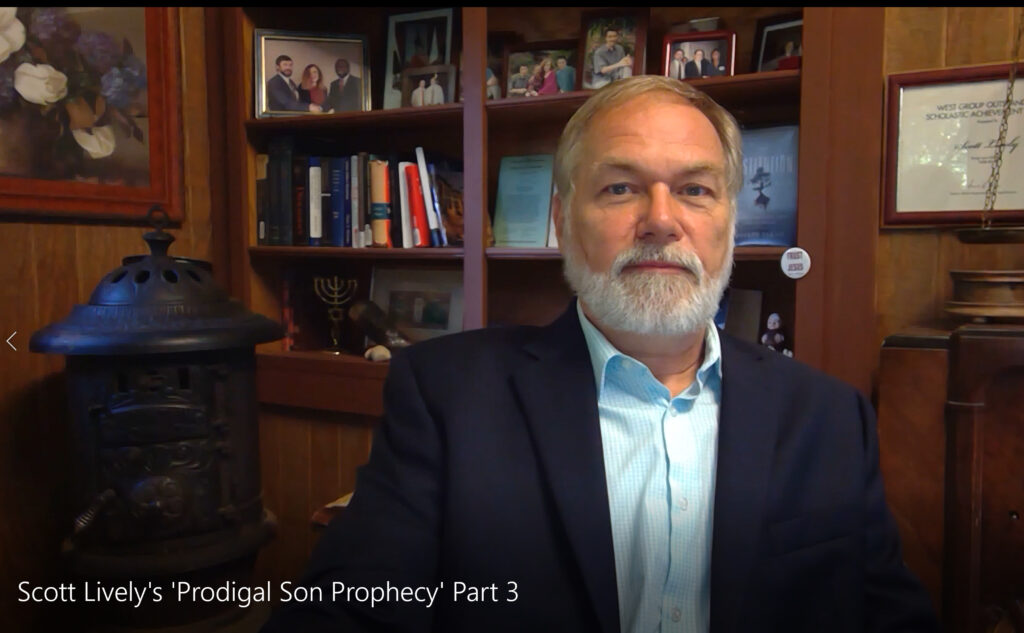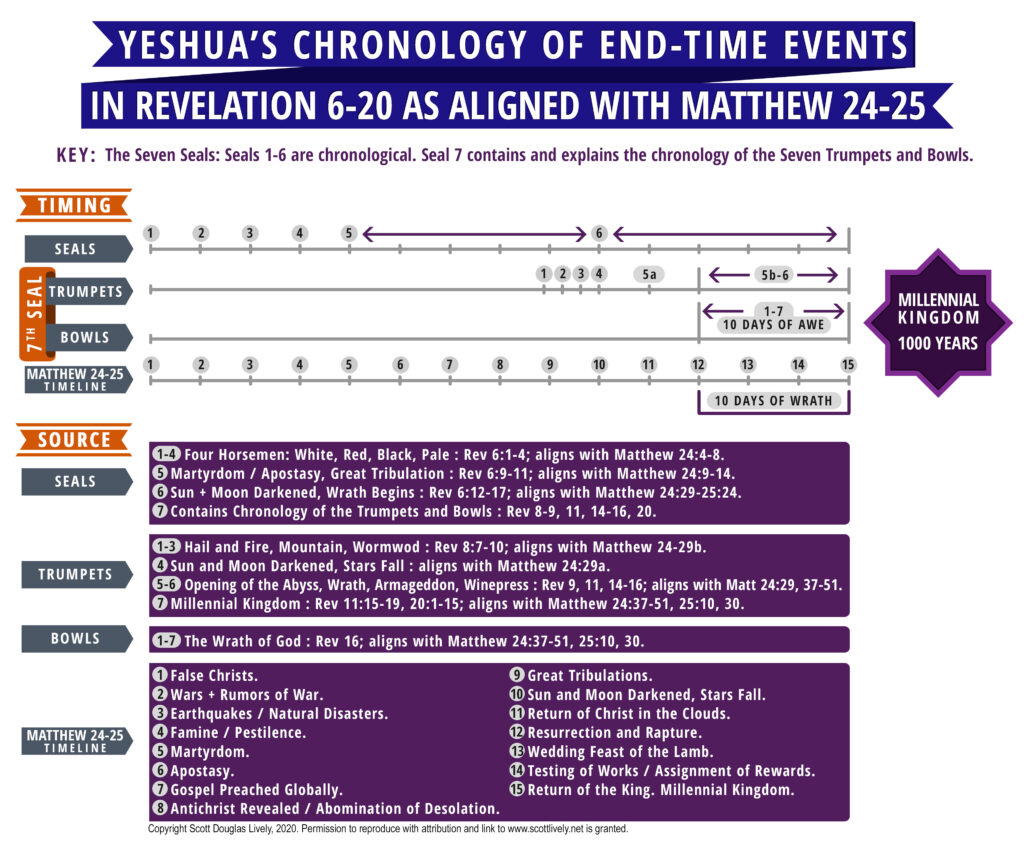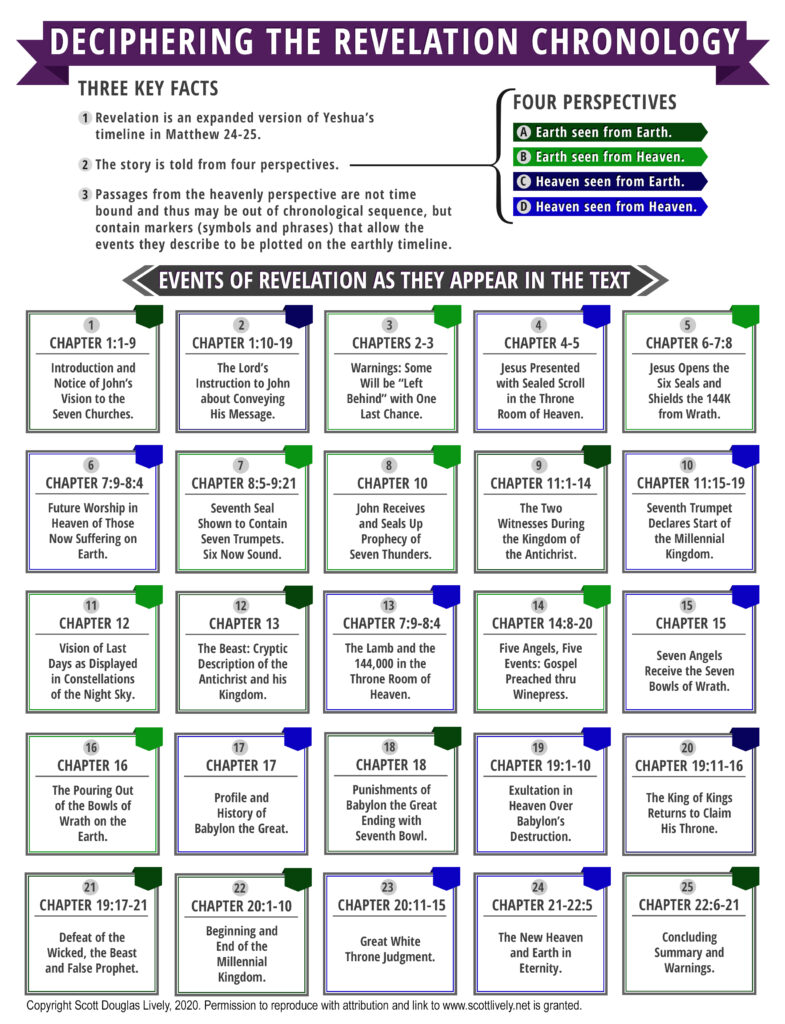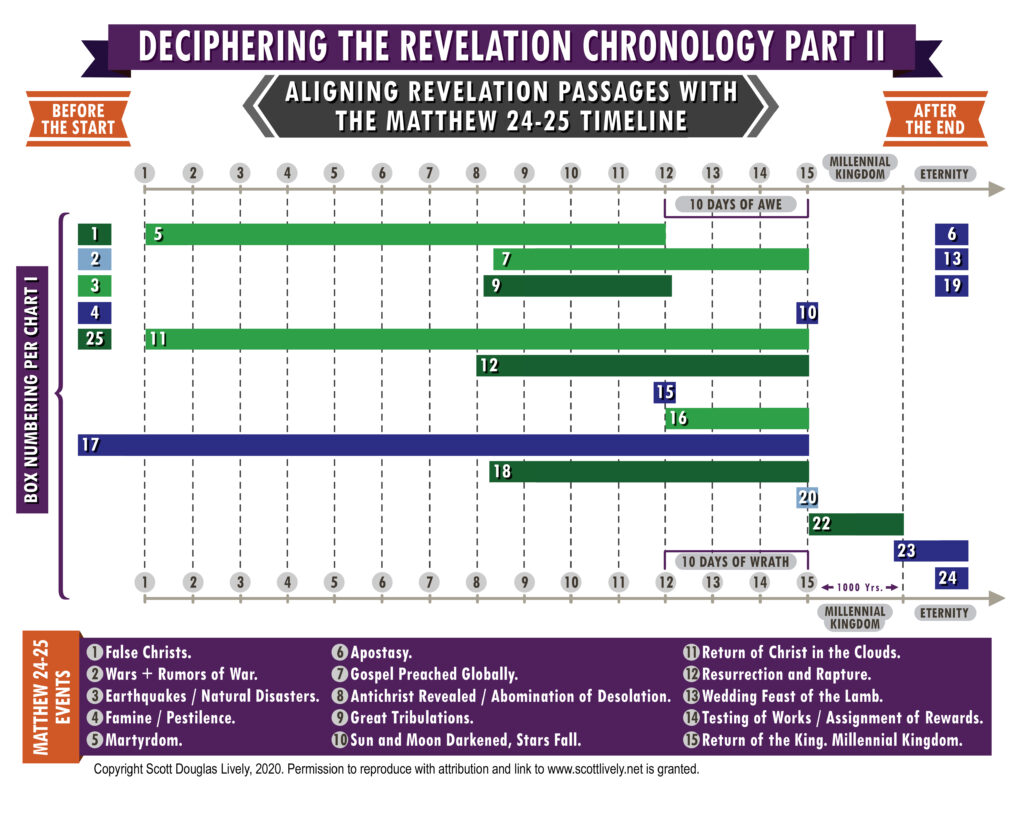
Dr. Lively continues his serial publication in video and PDF of his book ‘The Prodigal Son Prophecy: God’s Amazing Plan for the Restoration of the Two Hebrew Houses and the Salvation of the Gentiles” with this third installment, which is Part Two, of Chapter One of the book, augmented with charts and graphics.
To access all segments of The Prodigal Son Prophecy that have been published in video and PDF to date, use the link in the button bar at the top of the homepage. For a PDF of this third installment, click the download button below.
You are welcome to use the following charts with attribution and a link to this website.



Unlocking the Mysteries of Revelation (also published here at WND.com)
I have been publishing my most recent prophecy book as a series of videos and PDFs. It is titled “The Prodigal Son Prophecy: God’s Amazing Plan for the Restoration of the Two Hebrew Houses and the Salvation of the Gentiles.” Section One of the book is titled “A Fresh Look at End-Time Prophecy: A Christian Lawyer and Pastor Examines the End-Time Prophecies of the Bible “De Novo” from the Hebrew Cultural Perspective of the Apostles.” Today I am releasing the third installment of this series, starting with the section titled “The Seven Stages of the Last Days.”
In the prior installment (Chapter One, Part One), I explained my approach to prophecy, which begins with the hypothesis that Jesus’ instruction to the Apostles in Matthew 24-25 about the end times (a teaching called The Olivet Discourse) is both chronological and the primary key to harmonizing all the prophecies of the Bible.
A second key is the recognition that God’s system for time-keeping in the prophecies is explained in Leviticus 23 (the Seven Feasts of the Lord) and Leviticus 25 (the Centrality of Cycles of Seven). I then created a set of tools for testing the hypothesis, including a chart in which the Olivet Discourse is divided into a series of fifteen events, twelve events from the “beginning of sorrows” through the resurrection/rapture in Matthew 24, and three post-rapture events represented in the three parables of Matthew 25, along with a second chart showing how the Matthew 25 events fulfill the pattern of the three Fall Feasts of Leviticus 23.
Another major hypothesis in The Prodigal Son Prophecy is that the Book of Revelation should be viewed as an expanded and augmented version of the Olivet Discourse in which Jesus (through John) provided much more information to the church about the end-times at the very end of the Age of the Apostles.
The Book of Revelation can be said to be in one sense the “graveyard” of prophecy gurus since it’s apparent complexity from a Hellenic perspective has produced innumerable false theories and interpretations. Its heavy emphasis on symbolism and lack of a clear and self-evident chronological sequence lends itself to imaginative, sometimes fanciful speculation. However, from the first century Hebrew cultural perspective, the challenge of understanding Revelation is not nearly as daunting or problematic.
In this third installment I show how Revelation perfectly aligns with the Olivet Discourse chronology in the gospels and created a chart for depicting the alignment visually. To accomplish this very challenging task, by the inspiration of the Holy Spirit, I created a new tool for analyzing the chronology of the events in Revelation.
First, I demonstrated how all the events in Revelation can be divided into one of four categories based upon the perspective of time and space in each passage: 1) Events on earth from the perspective of earth, 2) events on earth from the perspective of heaven, 3) events in heaven from the perspective of earth, and 4) events in heaven from the perspective of heaven. Then, I divided the entire book into twenty-five passages based upon the perspective of each passage, and made a chart in which each of the passages is color coded based on its perspective. I then designed a third chart showing how each of the twenty-five passages can be plotted on the Matthew 24-25 timeline.
Importantly in my analysis, I emphasize that events in heaven, especially those from the perspective of heaven, cannot necessarily be plotted on the timeline based solely on their position in the narrative, because these events occur outside of time, where nothing in Creation has begun, yet is fully accomplished and completed. It’s a paradox for we time-bound mortals that must be accounted for in our interpretation of Revelation. To resolve this paradox, I wrote a section in this chapter on using the Biblical symbolism in the problematic passages to anchor them in the timeline – by showing how these symbols are used in other Bible prophecies that also align with the Olivet Discourse.
In this third installment, I also offer a different view on the seven seals, trumpets and bowls, arguing that they are perhaps best plotted on the timeline using another Biblical concept, the “wheel within a wheel” (which I envision as a spiraling cycle like a watch spring). Using this approach I show how we can view the seven trumpets as events which occur within the cycle of the seven seals, and, in turn, that the seven bowl judgments occur within the sixth trumpet. The seventh trumpet declaration of the Millennial Kingdom is in my analysis the final event of the series, it being one of the events in heaven from the perspective of heaven, that do not fit the apparent chronology of the text.
I conclude Chapter One with a discussion of the Season of the End, meaning the final generation preceding the second coming of Christ and how the symbolism of the fig tree can be used to determine which of three events in the 20th Century most likely mark the start of that generation.
As with all my prophecy writings, I hold my conclusions lightly and do not claim to have all of the answers. I believe the most important trait we all should cultivate in ourselves when we study prophecy is humility, since we cannot know with absolute certainty that any of our conclusions are 100% accurate because the events we’re considering haven’t happened yet and the passages we’re studying are usually susceptible to plausible alternate interpretations. That having been said, I think my analysis is sound, and where I am less confident in my conclusions I usually make that clear. I am publishing this book without charge, as an act of service to God in the fulfilment of my ministry for Him, and will provide any interested readers a free copy in PDF by email request to scottlivelyministries@gmail.com.



